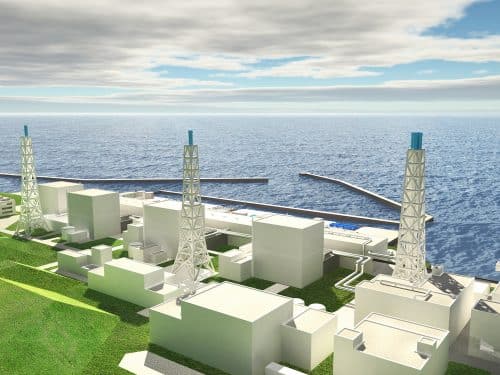Half a decade after the nuclear disaster, radioactive waste is still emitted from the site
The article is published with the approval of Scientific American Israel and the Ort Israel network

Five years ago, in March 2011, a devastating tsunami flooded the northeastern coast of Japan and caused the worst nuclear disaster since the Chernobyl disaster. The tsunami waves that floated past a 10-meter high breakwater, crashed powerfully onto the shore and caused the power cut to the nuclear power plant in Fukushima Daiichi. The power outage disabled the power plant's cooling systems, causing half of the facility's uranium cores to overheat. The molten cores oozed out and seeped through their steel vessels. A series of hydrogen explosions that occurred in the following days damaged three of the buildings in the reactor and, as a result, emitted radioactive materials into the atmosphere. The cloud of radioactive contamination that was emitted from the reactor and carried in the air forced about 160,000 residents of the area to evacuate their homes to a safe place.
The disaster site remains a high risk area to this day. Its former residents are not expected to return to it in the foreseeable future, as the levels of radioactivity near their homes are still extremely high. And what is even more worrying, the damaged power plant continues to produce hazardous nuclear waste. The Tokyo Electric Company (TEPCO), which operates the facility, is currently forced to circulate water through the reactor's three molten units in order to cool them, and by the way is constantly producing more and more radioactive water. And if that's not enough, the groundwater that flows down the hill behind the decommissioned facility carries with it the radioactive materials that leak from it on their way to the ocean.
The TEPCO company collects the contaminated water and stores it in large tanks at a rate of up to 400 tons per day. Recently, treatment processes have been carried out in the stored water to reduce the concentration of radioactive nuclei, but high concentrations of tritium, a radioactive isotope of hydrogen, still remain in the water. Opinions differ as to what will ultimately be done with the contaminated water, and no agreement has yet been reached regarding its final disposal site. The same is true for the millions of bags of contaminated soil and other solid nuclear waste from the disaster, as well as for the uranium rods - the nuclear fuel itself. The reports of the health authorities are also worrying. Scientists warn of an increase in thyroid cancer cases in the population of children who lived in Fukushima at the time of the disaster, although it is still too early to know if it is correct to attribute these cases to the nuclear accident.
In any case, the Japanese government intends to return to using nuclear power plants. Japanese Prime Minister Shinzo Abe recently emphasized the urgent need to restart the nuclear reactors in his country, which were all shut down following the Fukushima Daiichi disaster. So far, full operation has resumed at two of Japan's nuclear power plants.

2 תגובות
This is probably the place to put the next (somewhat long) film that deals with the safety of nuclear reactors and a proposal for a safer model of nuclear reactors.
https://www.youtube.com/watch?v=0BybPPIMuQQ
The disaster was caused by poor and unsafe planning. Such as the storage of radioactive waste in the reactor area, and things that are not planned correctly in any factory that contains dangerous substances (ammonia, gas or things of this kind). The ammonia tank in Haifa is a dangerous example of this, they can lead to a disaster! Atomic energy is an excellent solution to the lack of energy. (The reactor built in Jordan is expected to provide it with all the electricity it needs). In addition, high-quality personnel (highly paid research engineers, upgrading the country). But also investing in green energy (solar/wind/biogas / Hydroelectric). They will give the country cheap electricity - without pollution (Denmark, for example, or Russia with its massive hydro-electric dams). Israeli research (thermo-solar, Sharab chimneys), is partially implemented - the person with the money and the vision to promote it has not yet been found
(at least not in Sharab chimneys)